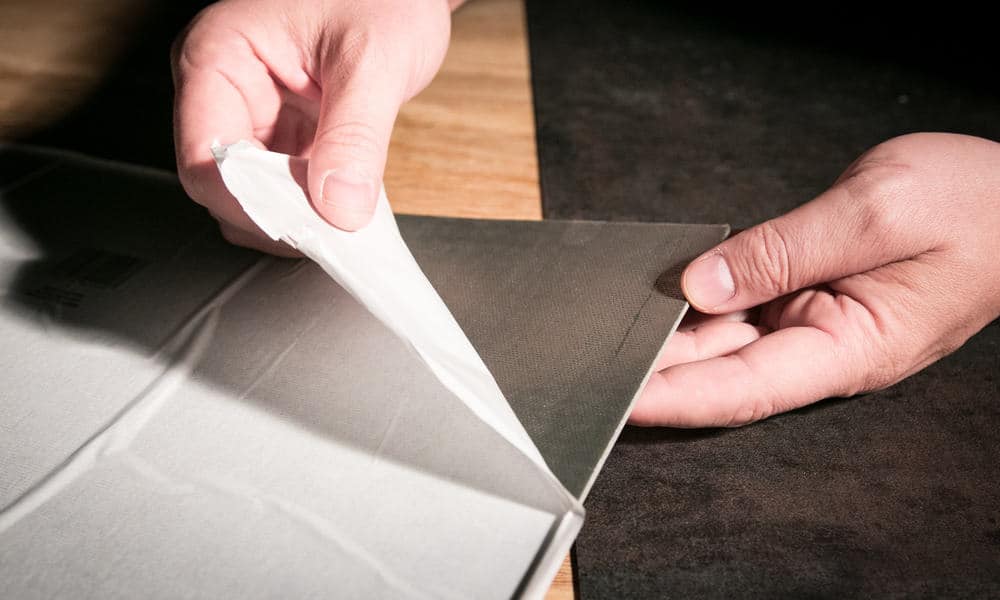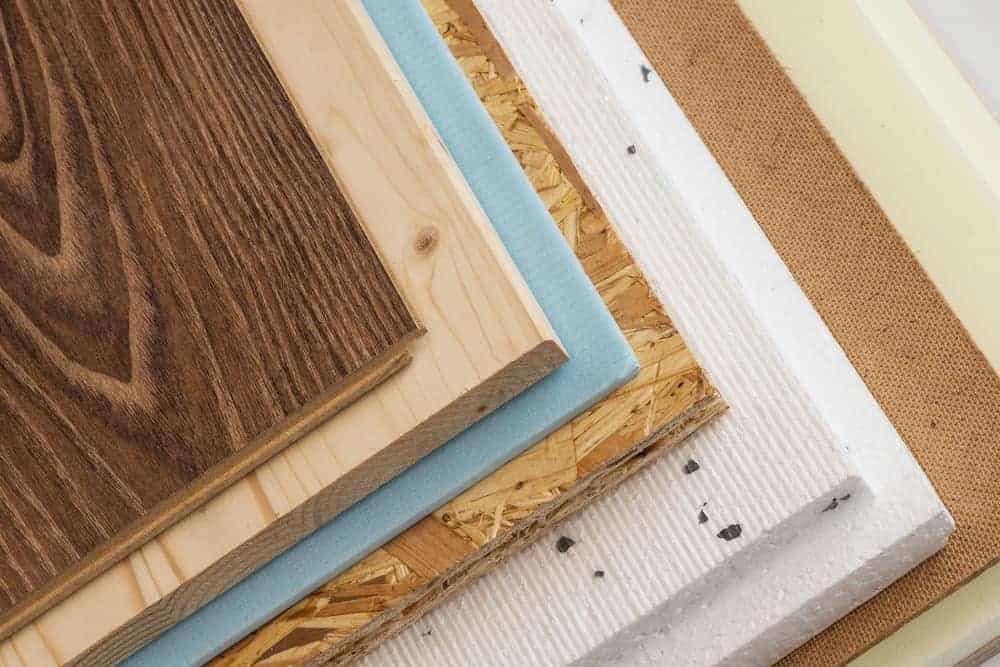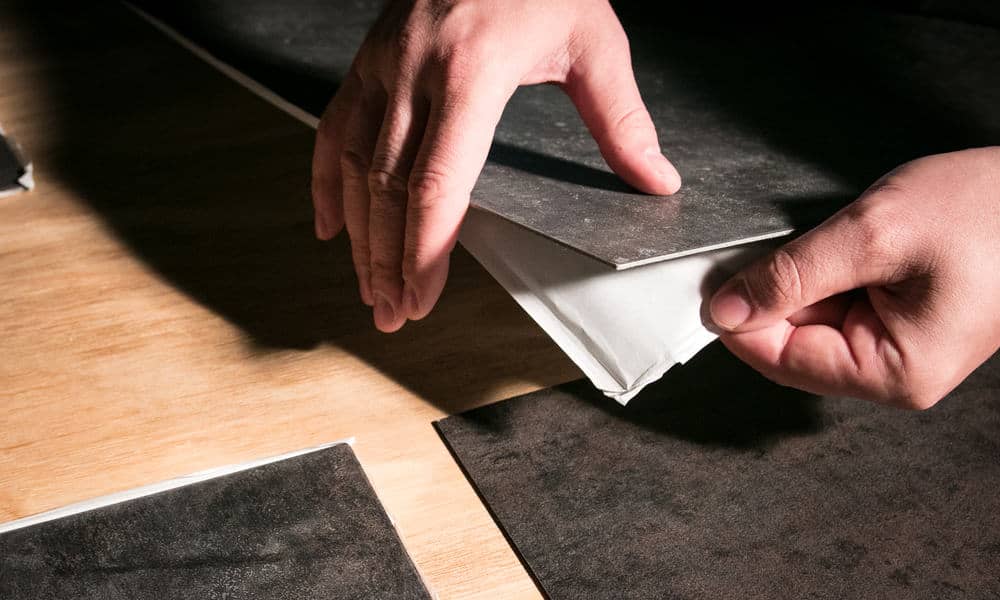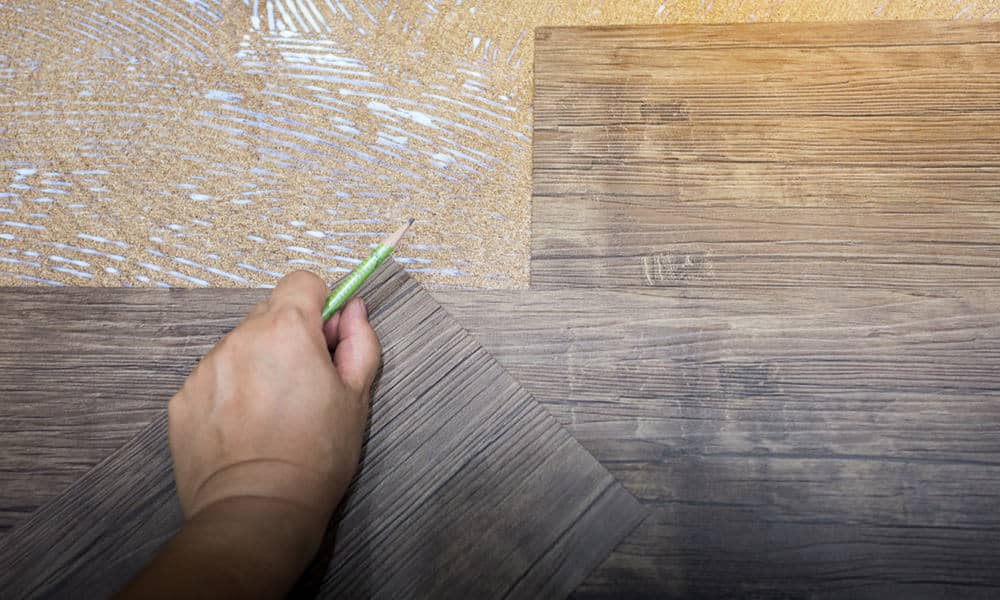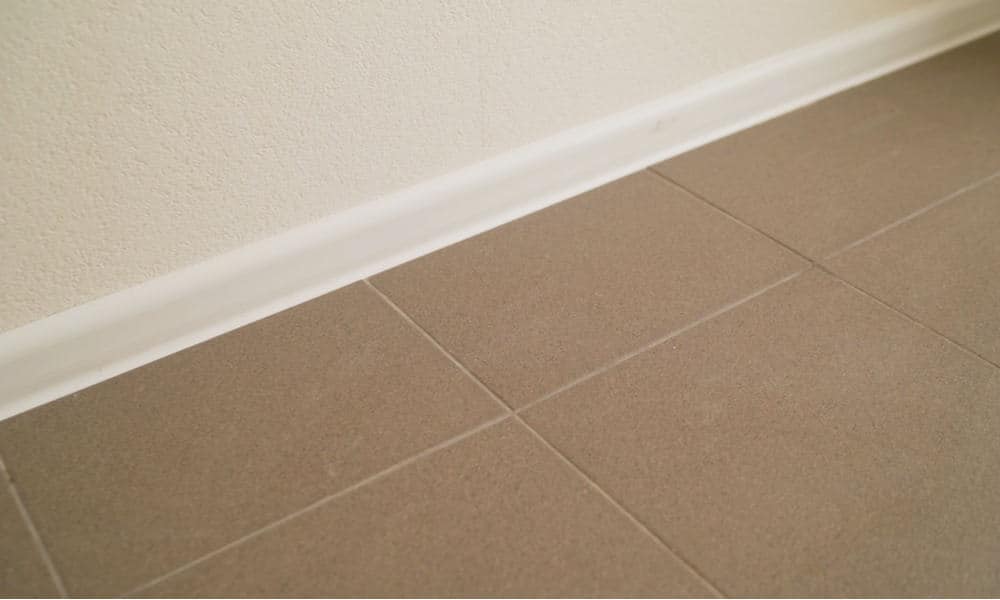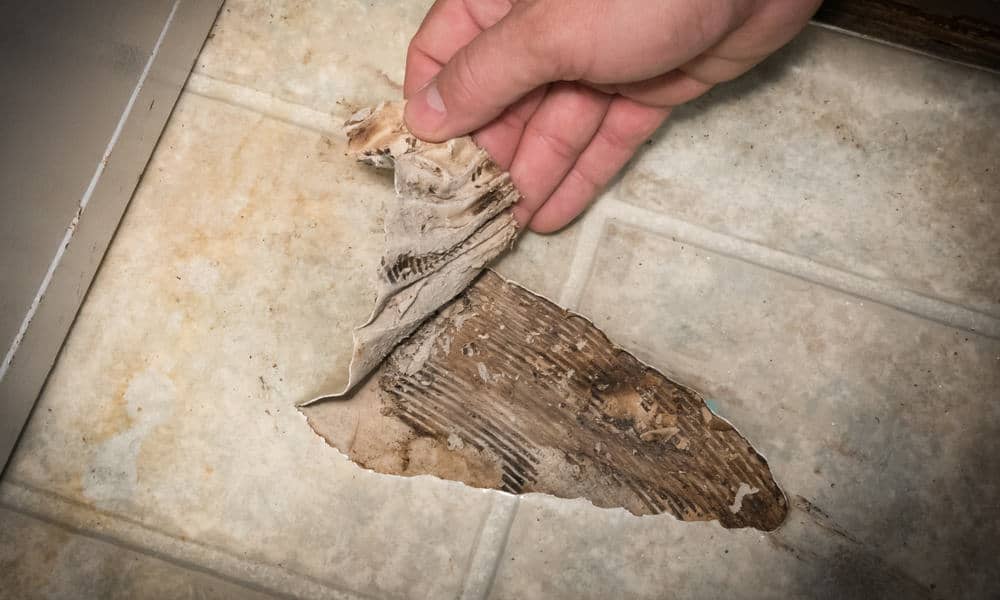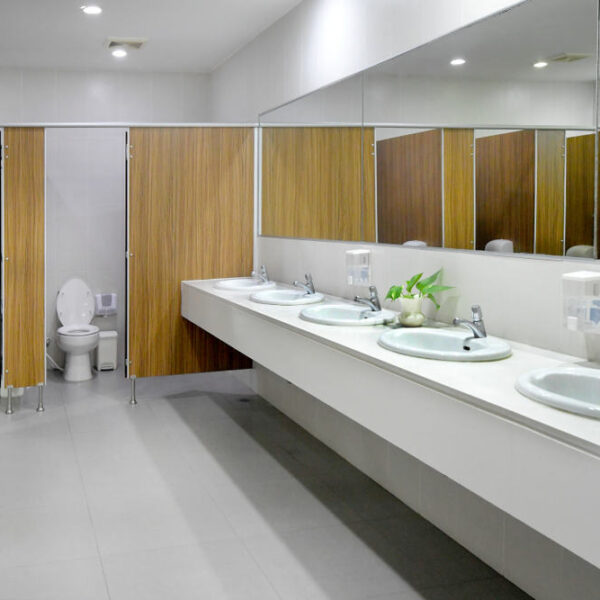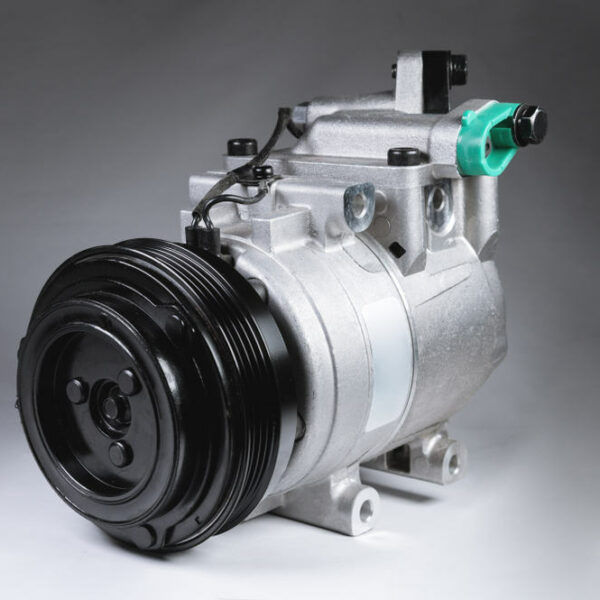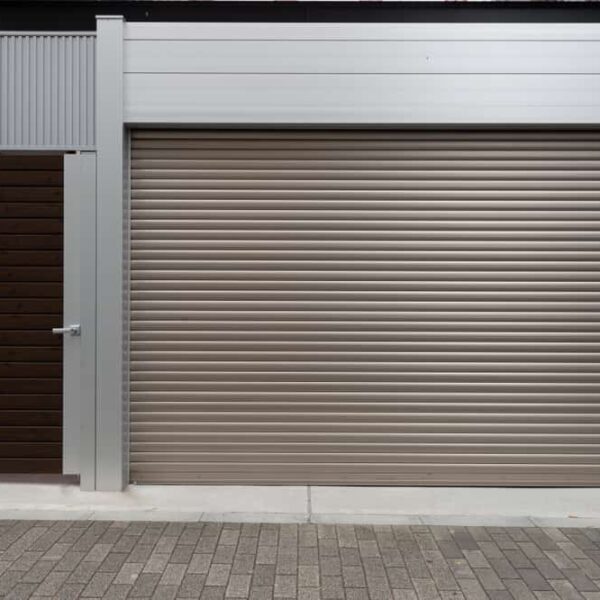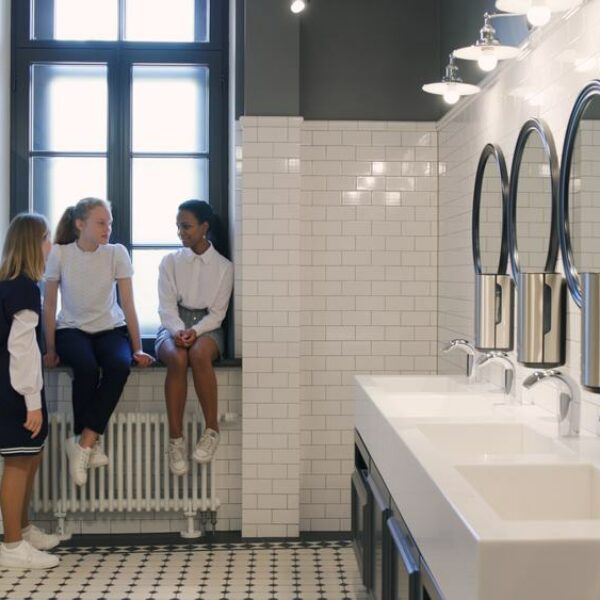Since vinyl bathroom flooring was invented in the 1930s, it has got a significant impact after World War II. It almost replaced the inexpensive and water-resistant linoleum by the 1950s. Given the many advantages of this material, it is still the preferred option for the bathroom floor.
Unfortunately, this versatile flooring material has a variety of undesirable characteristics, as well. It’s up to you to consider all available pros and cons and make a final decision. Let’s see.
Types of Vinyl Flooring
Nowadays, you can find two basic types of vinyl bathroom flooring.
- Sheet flooring – You can find 6 and 12 feet (1.8 – 3.7 m) wide sheets on the market. They are desirable thanks to their water-resistance and quick installation.
- Tile flooring – There are two options you can consider, including 9 by 9 inches (23 x 23 cm) and 12 by 12 inches (30.5 x 30.5 cm) sized tiles. People like this option since tiles are beautiful, cheap, and offer a ceramic-look to the bathroom.
Also, you can choose between five vinyl bathroom floorings, which vary in composition.
- Rigid core vinyl – It a stable engineered vinyl flooring thanks to its enhanced rigid core construction.
- WPC vinyl – This technologically advanced construction contains both recycled wood pulp and plastic, which provide strength and stability to the flooring. Plus, you won’t need underlayment to install it.
- SPC vinyl – It is a luxury vinyl made by combining limestone and stabilizers. That way, manufacturers create a durable core, which adds dent resistance, stability, and a specific structure to this 100% waterproof flooring.
- Luxury vinyl plank flooring – You can choose between two standard varieties of this popular material, including LVP (luxury vinyl planks) and LVT (luxury vinyl tiles). Both options are waterproof, and you can quickly install and maintain them.
- Hybrid vinyl – It is a brand-new type of vinyl bathroom flooring made after combining vinyl with other materials to provide the ultimate flooring.
Advantages of Vinyl Bathroom Flooring
Durability
Vinyl bathroom flooring is a durable option for your home. Thanks to a few commercial-grade layers, it can withstand high-traffic without damage wherever installed.
On average, this tough type of flooring can last for 20 to 25 years, depending on the conditions in your bathroom and the number of household members using it. In most cases, manufacturers offer a 15-year warranty for this product, which is proof of its durability. However, the quality of the material will impact this feature the most.
Water resistance
One of the crucial advantages of vinyl bathroom flooring is 100% water resistance with a non-porous surface, which doesn’t allow water to flow through it. That means moisture and water, which collect after taking a shower, won’t affect this material considerably.
Stain resistance
Both printed vinyl sheets and tiles have a wear layer, which protects the floor from stains as a surface barrier. That material makes this flooring an easy-to-clean option. Keep in mind that composite and solid tiles don’t have that layer. Therefore, they require regular cleaning and polishing.
Installation
Vinyl bathroom flooring is not complicated to install at all, and you can pick out this option if you are skillful and like DIY projects. The best thing is that you don’t need to remove existing flooring, such as linoleum or old vinyl. Instead, you can place the new one over the previous layer.
Thanks to the click-lock system, you can finish the job in less than half an hour. For quick installation, avoid sheets and use tiles or planks for your bathroom.
Also, you can consider some luxury brand that offers self-adhesive vinyl bathroom flooring. The only thing needed is to remove the backing and place the tile into the properly prepared subfloor.
Maintenance
Vinyl bathroom flooring is probably the option that requires the lowest maintenance, comparing the other materials you can find on the market. These tiles or sheets are resilient to abrasion, petrol, acids, alkalis, detergents, and soaps, so you can quickly clean them by using any chemical strippers.
However, keep in mind that waxes, some detergents, ammonia, and solvent may damage the surface of your flooring and make it dull. Instead, you can use any homemade solution for cleaning, including white vinegar.
If you add a few drops of essential oil in the solution, you will get a clean and fragrant bathroom in one go. The most appealing feature is that this material is entirely dust-free!
Visual appealing
I like a luxury, wood-like vinyl bathroom flooring. The design process nowadays is so advanced that most people can’t make a difference between real wood and new vinyl options. Don’t forget that you will get this desirable appearance at a much lower price.
Availability
The excellent thing is that you can choose from a variety of vinyl bathroom floorings. You can choose tiles, sheets, or planks in different colors, patterns, and styles. Except for wood, this material can mimic the looks of stone, regular tiles, concrete, and terrazzo.
Softness, warmth, and friction
These floorings are softer than most other materials thanks to a layer of foam underneath the vinyl. It provides more flexibility and warmth since it doesn’t become cold in winter.
Vinyl bathroom flooring has a higher friction factor than other materials. It is a significant feature since the dynamic friction factor decreases the chance of slipping and falling.
Affordability
The average price of vinyl bathroom flooring varies depending on the quality. It is usually:
- $3 for 1 sq. ft (0.09 m2) of sheet vinyl
- $5 per 1 sq. ft (0.09 m2) of vinyl tile
- $7 for 1 sq. ft (0.09 m2) of luxury vinyl planks
It includes professional installation, which is inexpensive, uncomplicated, and fast. You can find a carpet at the same price, but its maintenance is more expensive.
This option is almost twice cheaper than the cost of the wooden floor and even more compared to stone. Once installed, vinyl bathroom flooring can improve the value of your house, as well.
Replacing
It is not a big deal to remove vinyl bathroom flooring, and you can do it by yourself without additional costs. Moreover, once you damage a tile, you can replace only this one instead of changing the entire flooring as it is the case with the other materials.
Disadvantages of Vinyl Bathroom Flooring
Emission
The crucial issue with vinyl bathroom flooring is the emission of toxic VOC (volatile organic compounds), which harms the ozone and entire environment. Keep in mind that inhaling VOC after the floor is installed may cause respiratory issues, eye irritation, and worsen existing health problems, as well. Nowadays, manufacturers use water-based adhesives to resolve this problem.
Eco-unfriendly
Unfortunately, vinyl bathroom flooring is not biodegradable, and there is no possibility to break it down naturally. Also, almost no one recycles it, and most of the worn-out material ends up in landfills.
Also, the production of these flooring consumes a large amount of non-renewable natural resources, including natural gas and petroleum.
Discoloration
If you have a large bathroom window and your vinyl bathroom flooring is under the influence of direct sunlight and high temperatures, its colors will fade over time. You can solve that issue by closing the blinds during the day, but it is not an ideal solution if you like natural space lighting.
Also, if you like slippers with a rubber sole, you can expect the discoloration of flooring parts even though your vinyl has a quality protective layer. Unfortunately, a low-quality vinyl may become yellow after a while, as a result of the accumulation of dirt beneath a wax layer.
Inconsistent quality
Very often, the quality of vinyl bathroom flooring varies, even among top-rated brands. To be desirable, this material should be at least 0.08 to 0.3 inches (2 – 8 mm) thick. If it is thinner, you will face a damaged flooring very soon. When the vinyl is thicker, it will be more stable and durable.
If it is possible, you should pick out vinyl engineered with four layers to get a high-quality and strong product. Keep in mind that flooring, which is not thick enough, can’t withstand heavy load.
Difficulty in removing glued down vinyl
It is quite hard to remove vinyl flooring without professional help if it is glued down in the first place.
Prone to damage
Even though vinyl bathroom flooring is durable, you can damage it with a knife or screw. Also, any other sharp object can ruin it, including scratching with sliding a metal chair, for example.
Requires a flawless substrate
Before placing vinyl bathroom flooring, you should prepare the flawless, flat, and smooth substrate (subfloor). Only that way, you won’t have an issue with ugly cracks, dents, and stains. Therefore, take care to make the subfloor entirely leveled and dry. Any residual moisture or dirt will affect the adhesive negatively after installed.
Asbestos
Manufacturers used asbestos to make vinyl bathroom floorings during the 1980s. So, you should replace it as soon as possible since you have a provenly carcinogen material in your bathroom.
Be aware that it is not harmful while the flooring is in excellent condition. However, you should start worrying once the surface begins cracking.
